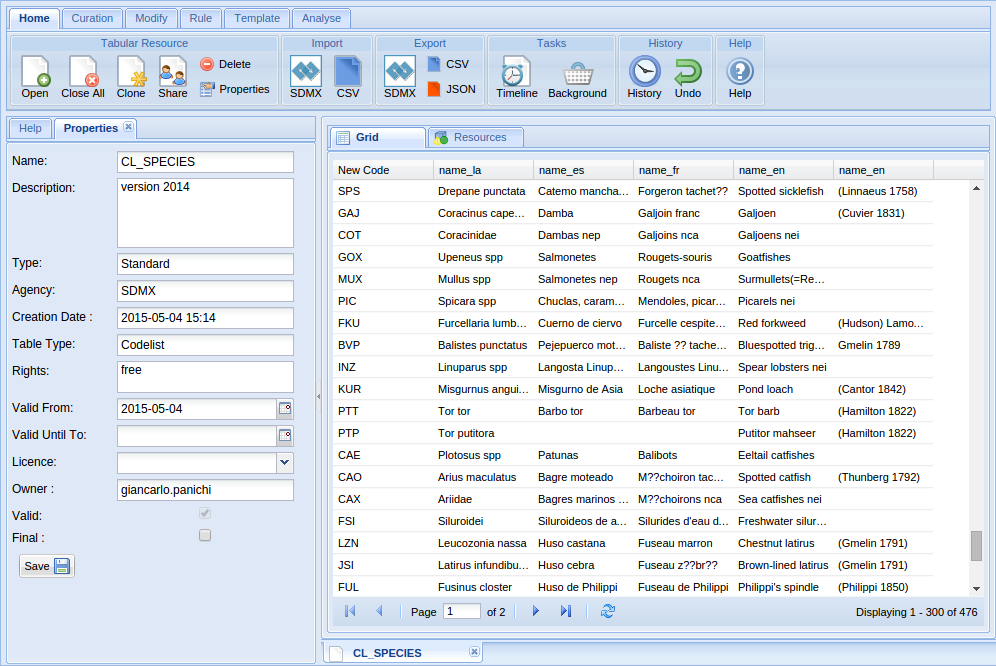Difference between revisions of "Tabular Data Manager"
| (388 intermediate revisions by 4 users not shown) | |||
| Line 4: | Line 4: | ||
This is the user guide to Tabular Data Manager portlet. | This is the user guide to Tabular Data Manager portlet. | ||
| − | |||
== Overview == | == Overview == | ||
| + | Tabular data manager is a working environment which ensures the management of tabular resources such as datasets, codelist and generic tables. Different types of data can be imported into the platform and a set of operations be performed to create, explore and partially manipulate your file. Tabular Resources are used in different scientific fields ranging from statistics to signal processing and econometrics. Among the available facilities of Tabular Data Manager is the possibility to check for data correctness using codelist files, to perform aggregating and filtering operations. The main strength of the platform is the management of big dataset with more than million of data without having problems in exploring and further process your file. | ||
| − | + | [[Image:tabular_data_manager1.png|thumb|center|740px|Tabular Data Manager, portlet]] | |
| − | + | ||
| − | [[Image:tabular_data_manager1.png| | + | |
| − | + | ||
| − | + | ||
| − | + | ||
| − | + | ||
| − | + | ||
| − | + | ||
| − | + | ||
| − | + | ||
| − | + | ||
| − | + | ||
| − | + | ||
| − | + | ||
| − | + | ||
| − | + | ||
| − | + | ||
| − | + | == Main Topics== | |
| − | : | + | * [[Tabular Data Manager: Basic Operations|Basic Operations]] |
| − | [[ | + | * [[Tabular Data Manager: Curation| Curation]] |
| + | * [[Tabular Data Manager: Modify| Modify]] | ||
| + | * [[Tabular Data Manager: Rule| Rule]] | ||
| + | * [[Tabular Data Manager: Template Management| Template]] | ||
| + | * [[Tabular Data Manager: Analyse| Analyse]] | ||
| − | == | + | <!-- |
| − | + | ==References== | |
| + | {{Reflist}} --> | ||
| − | |||
| − | |||
| − | |||
| − | |||
| − | + | <!-- | |
| − | + | [[Template:Tabular Data Manager]] | |
| − | + | --> | |
| − | + | ||
| − | + | [[Category:Tabular Data Manager]] | |
| − | + | [[Category:User's Guide]] | |
| − | + | ||
| − | + | ||
Latest revision as of 10:32, 4 July 2019
Contents |
This is the user guide to Tabular Data Manager portlet.
Overview
Tabular data manager is a working environment which ensures the management of tabular resources such as datasets, codelist and generic tables. Different types of data can be imported into the platform and a set of operations be performed to create, explore and partially manipulate your file. Tabular Resources are used in different scientific fields ranging from statistics to signal processing and econometrics. Among the available facilities of Tabular Data Manager is the possibility to check for data correctness using codelist files, to perform aggregating and filtering operations. The main strength of the platform is the management of big dataset with more than million of data without having problems in exploring and further process your file.
